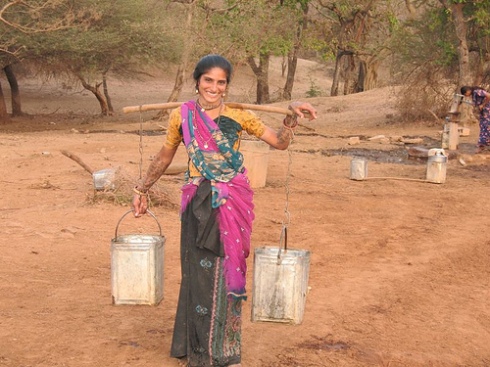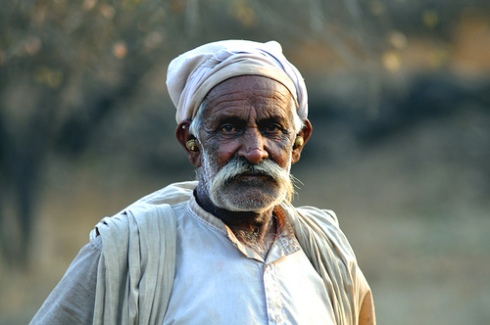In the gir forest, a woman from the maldhari tribe.
Tangkhul Naga, Manipur
12 Feb
:image credits:
"The tangkhul Naga shawl of Manipur is a thick cotton shawl worn by men and woven by women in striking bands of rust and blcack. The bands may vary in width and the ends of the shawl are often decorated with brilliantly coloured extra wefts" Uncut cloth, by Askari and Arthur, Merrel Holberton Publishers.
ghumar..ghumar…ghumar she dances.
3 Novshe holds a chari on her head and a lighted lamp is placed in it..
popular in the kishengargh region of rajasthan.
Thank You prerna
“shae amake sindoor poralo. amhi vivahit hoye gyalam” she said in bangla
19 Septranslated ” he put sindoor on my forehead. I am now married to him”
sindoor is (made with turmeric and alum or lime) is a mark made by the man on the parting of his bride’s hair which symbolises that she is now married.
this picture is of a bride and bridegroom from bengal.
bangla is a language spoken in bengal, bangladesh
“thalel oru thortum, oru kailiyum udut njan ravele eranguum meen veekyan”he said in *malyalam.
14 Sepimage credits: thaths
translated : wearing towel on the head and draping a ( a cloth which measure 2.5 meters is called kaili) i leave in the morning to sell fish.
* malyalam = is a language spoken in kerala
The 5 K’s of the sikhs- Kesh. Kanga. Kara. Kaccha. Kirpan.
8 Aug image credits = larry &flo
image credits = larry &flo
kesh = hair, kanga =comb to keep their long hair tidy, kara =steel bangle worn on the right arm.
kaccha =similar to soldiers undershorts, kirpan = warriors sword.
they are literal meanings of the word. these objects hold more than literal meanings in the life of a practising sikh – both men and women.







